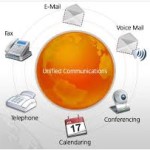 The Internet of Things is coming — to refrigerators, washing machines, TV sets, cars and coffee machines near you. And as many of you know, consumer technology has a way of filtering down to the enterprise sector, so it’s not hard to envision an entirely new profusion of devices at work soon.
The Internet of Things is coming — to refrigerators, washing machines, TV sets, cars and coffee machines near you. And as many of you know, consumer technology has a way of filtering down to the enterprise sector, so it’s not hard to envision an entirely new profusion of devices at work soon.
The Internet of Things, or IoT, refers to the connected devices above, yet it can also apply to wirelessly connected devices called wearables. Smartwatches and fitness trackers like the Nike Fuelband are the most commonly seen IoT devices right now, yet even they are just a narrow subset of the whole trend.
And the IoT is going to give your IT department an awful lot to mull over. Generally speaking, an organization’s IT will want to cover company data and the endpoints it runs through. Even IoT devices, though, are going to send data using the enterprise network, or through an endpoint device. Most IT managers are going to be more concerned about devices brought into the corporation, rather than with any “internal threats,” such as IoT devices on the company network.
There’s a common thread that emerges when you start talking about IoT and security policies. It’s important to be proactive as a company and provide any tools or policies your employees might need so that your employees will comply. Limiting their access will only create roadblocks for people who are trying to be more productive.
On the whole, the IoT is expected to accrue revenues upwards of $4.7 trillion in 2012, and $8.8 trillion by 2020, as reported by International Data Corporation. Due to the magnitude of this growth, it’s well worth taking a look at where IoT might be heading next, most especially in the enterprise.
Connecting Homes and Cars
The connected home and car are two areas in which IoT is already making inroads. Car manufacturers, wireless providers, insurance companies, and others are already putting money into connecting homes and cars. Part of the reason for this is they want to mine the data that helps businesses understand how to better personalize services for their customers.
For instance, Google has purchased Nest, the manufacturer of smart thermostats and connected smoke and carbon monoxide detectors, in an effort to connect into the home. And Apple has put an undisclosed sum into CarPlay, a kit which connects cars with iOS 7. They are also releasing HomeKit, for use with the iOS SDK.
However, what we are really waiting to see is how corporations can use these particular connections to make their employees more productive. Perhaps you can have your car read your email to you — or your dishwasher.
Healthcare Sector
The IoT is already changing healthcare from the bottom up and from the top down. There are devices built to better aid patient care, such as better baby monitors to prescription pill trackers. For devices meant to aid nurses and doctors, there are thin-client devices that physicians and staff can use to log in once at the beginning of a shift, then use a badge to get into the system at other stations around their facility, thus cutting re-login time by 95%, and improving bedside manner overall.
A Connected Enterprise
IoT devices will be used by enterprises to assist employee productivity. This may be less an evolution than it is an iteration, however. A connected organization might be enabled to track an entire sales force, or keep tabs on a whole fleet of vehicles. That same connected enterprise might also give you improved functionality, providing the technology needed to smoothly move data from smartphones to control TVs, smart boards, robots or other devices that connect employees to big data across the organization — maybe even the world.
Author: Michelle Patterson is excited with the new technologies that are threatening to change the way we stay in touch and communicate, particular in business. She works with companies that are introducing these technologies to make understanding them easy for regular people.